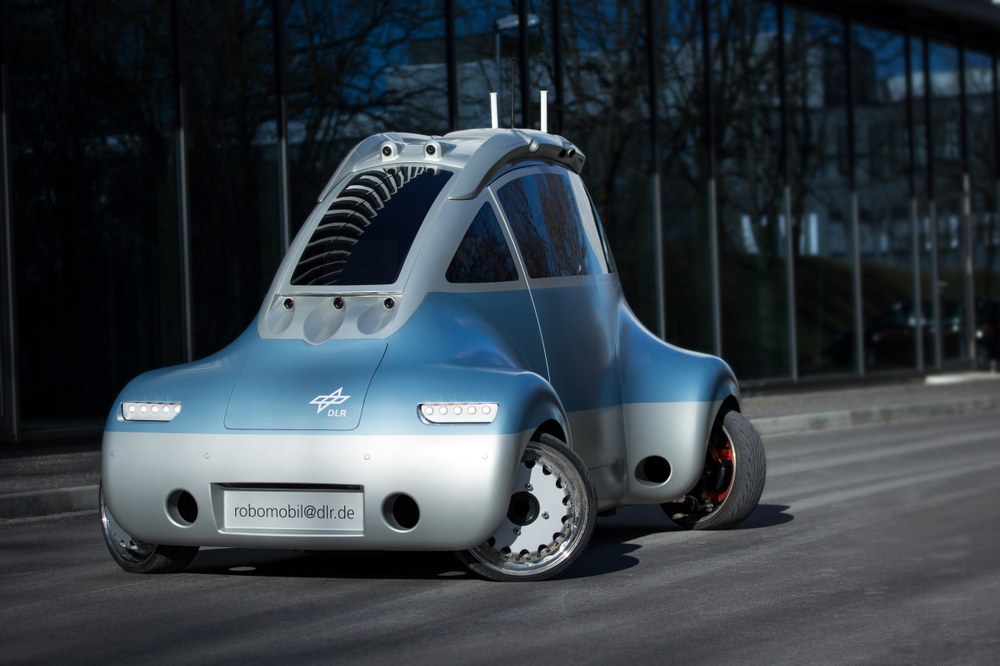ROboMObil

A car with space technology -- driving with the ROboMObil
Your consent to the storage of data ('cookies') is required for the playback of this video on Youtube.com. You can view and change your current data storage settings at any time under privacy.
The innovative mechatronic chassis of the ROboMObil is based on four identical wheeled robots, each of which integrates a drive motor as well as braking, steering and damping systems. The operation of the wheeled robots is coordinated by an intelligent central vehicle control system. Thanks to the individual wheel steering, the ROboMObil has an impressive manoeuvrability that even allows it to drive sideways or turn on the spot. This flexibility shows its full potential in an urban or logistical context.
The ROboMObil can be operated fully manually, semi-automatically or fully automatically. The desired movement of the vehicle can be commanded by the driver via a force feedback sidestick with three degrees of freedom. The intelligent path-following control supports the latter modes by allowing the vehicle to automatically follow a predefined path within limited corridors.
Simulation tools play a central role in both the development and validation of vehicle control functions. To this end, our virtual design and test environment offers complete, detailed vehicle models using the object-oriented modelling language Modelica. In addition to multi-body dynamics, these models also include sensors and electromechanical actuators. In this way, different areas such as mechanics, electrics and hydraulics are combined in one model. Innovative tool chains aim to automatically generate code for production-ready control units from the control algorithms developed.
In short, the ROboMObil offers a flexible platform for research into integrated control and estimation algorithms for energy management and vehicle dynamics, as well as AI-based control and autonomous driving

